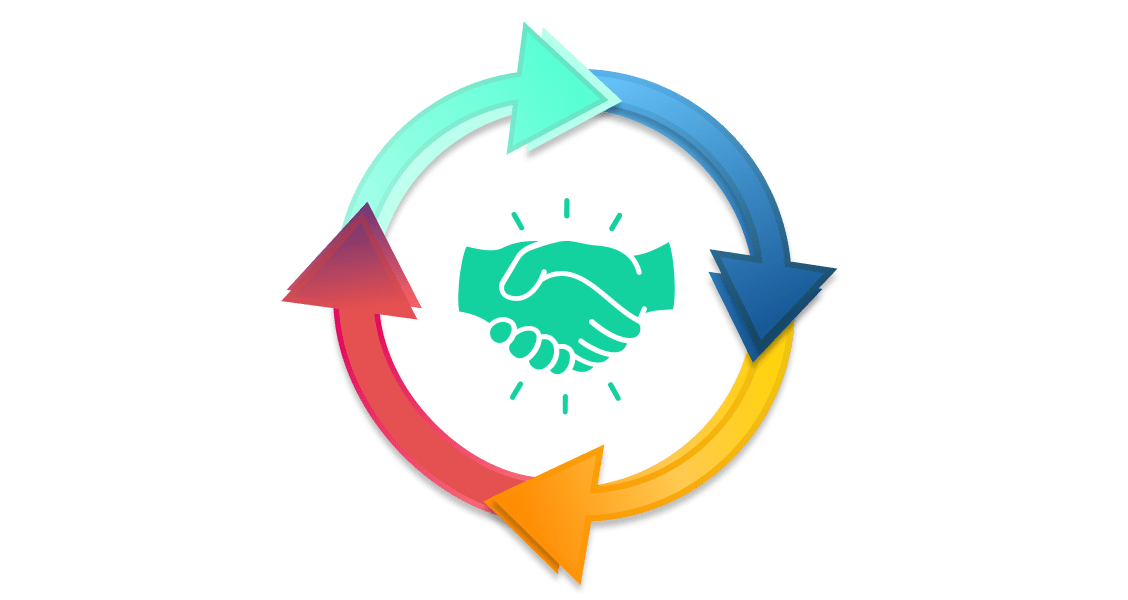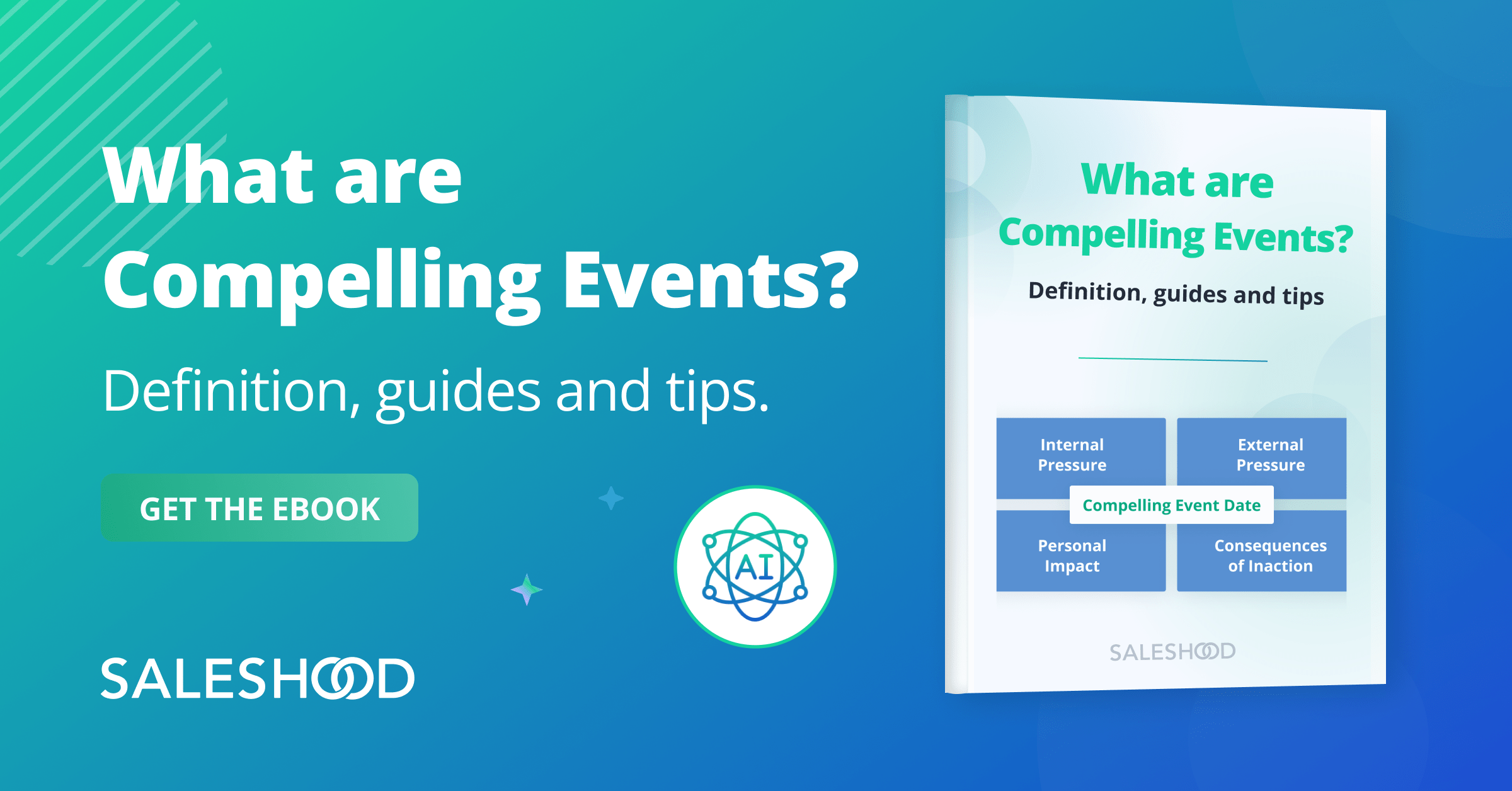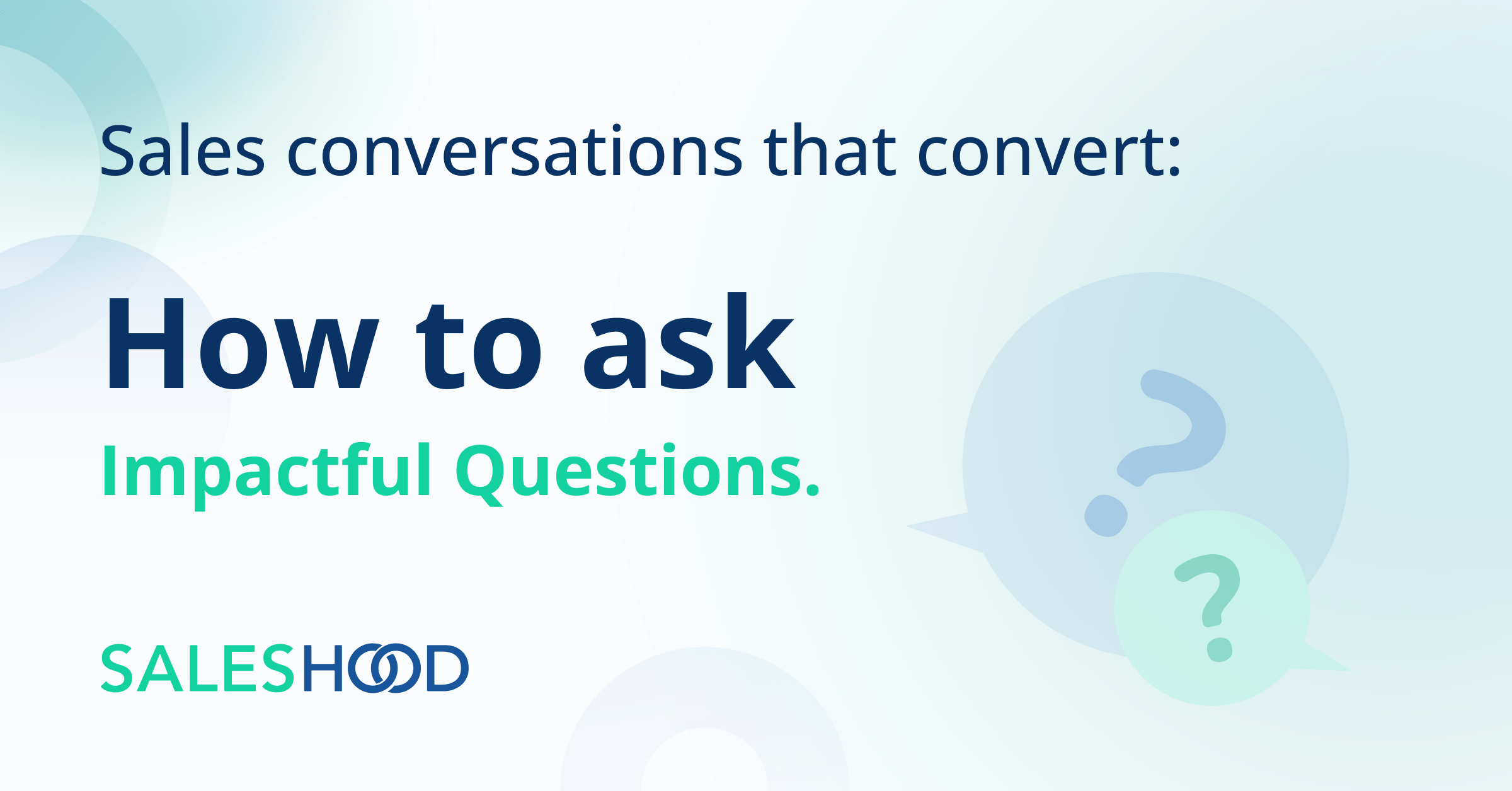Business-to-business (B2B) selling is a unique and complex process that requires extensive time and effort to excel at. A B2B salesperson needs specific industry and product knowledge, incredible sales skills, and the right tools to help effectively identify prospective clients, manage long sales cycles, and close deals efficiently.
In this article, we’ll define B2B sales, review the B2B sales process and sales cycle typical of business-to-business sales, and highlight best practices.
What is B2B sales?
B2B sales is the process of a business selling goods or services to another business instead of consumers. Selling to other companies is a time-intensive sales cycle due to larger dollar commitments that commonly reach five to six figures. Closing a B2B sales deal requires sales and account representatives to educate themselves about their customers’ specific needs and pain points, then provide a custom-tailored solution that meets and exceeds those of their competitors.
And the B2B sales cycle has gotten longer due to more cooks in the kitchen. According to this Harvard Business Review article “The New Sales Imperative” there are more decision makers in the cycle now compared to just a couple years ago:
“… the number of people involved in B2B solutions purchases has climbed from an average of 5.4 two years ago to 6.8 today, and these stakeholders come from a lengthening roster of roles, functions, and geographies.”
More people in the room means more coordination of schedules, more questions about the product, more concerns, more feature requests, more meetings, and ultimately – the more time it takes to close a company-to-company sale..
Common characteristics of B2B sales
B2B selling involves higher-value deals that often represent a significant customer investment, reaching thousands or even millions of dollars. As a result, these deals usually involve multiple decision-makers and rounds of negotiations, leading to long deal cycles that can last months.
B2B deals also include multiple touch points throughout the sales cycle, making prompt and effective communication essential for overcoming objections and building relationships.
Examples of B2B sales deals
Anything one business sells to another business qualifies as B2B selling, so business-to-business sales can involve a wide range of products and services.
Here are some examples of B2B sales:
- Software: Software or SaaS solutions that help improve a business’s organization, efficiency, or overall operations are considered B2B sales. Common examples include customer relationship management (CRM) platforms like Salesforce, communication platforms like Slack, and sales enablement platforms like SalesHood.
- Raw goods and supplies: Selling the materials businesses need to make their products is B2B selling. Examples include selling computer chips to car manufacturers, corn to food processing companies, and steel to factories that create building supplies.
- Equipment: B2B sales includes providing companies with the tools they need to create products or perform services. Selling cranes or bulldozers to a construction company, molds to a metal component manufacturer, or phones to communications companies would all qualify as B2B equipment sales.
- Product distribution: Wholesaling is a form of distribution service, like providing fresh fruit and vegetables to a grocery store or medicine to hospitals, commonly involved in B2B deals.
- Professional services: B2B selling doesn’t always require products. If you offer your industry knowledge as a consultant, conduct market research as a digital marketing company, or provide legal counsel to a business, you’ve provided professional services in a B2B deal.
These examples are just a few of the types of B2B deals that you’ll see.
How do B2B sales compare to B2C sales?
Business-to-business and business-to-consumer (B2C) sales have similar goals, but the deals you make and the sales process each requires vary significantly.
Here’s how B2B is different from B2C sales.
Focuses on quality over quantity
B2B selling involves low-volume, high-value deals that can reach into the millions, as some companies drastically change their business dynamic around a new product or service.
B2C selling often has lower-priced products and relies on a higher sales volume to generate revenue.
Longer sales cycles
Business-to-business sales have a significantly longer sales cycle than most business-to-consumer sales.
Larger deals include more decision-makers, so you have to convince more people that your solution is right for them. You must also address each stakeholder’s needs, which can change or conflict with someone else’s.
B2B also involves negotiations, multiple meetings, demonstrations, and in-depth discussions that delay decisions and require a greater time investment from sales reps.
In B2C purchases, consumers often simply find the product they want and complete the purchase immediately or have a brief conversation with a sales representative to answer immediate questions.
Higher demands for personalized sales content
Many B2B deals include custom-tailored solutions built around the buyer’s needs. To address these needs, your team will often need to provide personalized content that answers their questions or demonstrates how you can solve their problem.
For example, sales reps might record a product demo for the customer’s intended use case or create a video reply to a question. They may also need to have a meeting with stakeholders to present a specific solution.
Business-to-consumer deals generally involve standardized sales content like website listings, FAQs, and demos that cater to a larger audience.
Prioritizes problem-solving over impulsivity
Your business solutions need to tick many boxes. Prospects aren’t looking for a one-size-fits-all solution–they want something that specifically solves their problems.
During B2B sales, your sales reps must learn the potential buyers’ needs and use their experience and knowledge of your products and services to meet them. Buying groups aren’t making short-sighted decisions; they’re often making major investments into long-term solutions, so you have to address their pain points as completely as possible.
Selling to consumers can be more impulsive and based on emotion. You still need to offer them a solution to their problems or fulfill their desires, but consumers are much more likely to take a chance on a low-cost product compared to company-wide changes that could cost millions.
Greater focus on relationship-building
B2B sales are collaborative relationships between buying groups and sales reps. Both parties want a successful deal: buyers want a solution that meets their needs, and sellers want to complete the deal.
Sales teams also want to secure long-term and recurring deals, so the standard for customer service is higher to help build brand loyalty and secure repeat business.
B2C sales still prioritize customer service, but sales reps don’t build the same significant relationships for individual transactions because it’s not cost-efficient.
What is the B2B sales process?
If you’re selling to businesses, you can use a B2B sales process that roughly outlines the steps to generate business and close deals from start to finish, including finding leads, providing solutions, and nurturing post-sale relationships. Each business has its own version of a sales process or cycle, so here’s a general guideline you can customize to fit your business.
Lead prospecting
Before you can sell to prospects, you need to find them. Trying to sell to people who aren’t in your market wastes valuable time, so it’s important to pinpoint your ideal customer.
Lead prospecting involves researching what kind of customers you want, finding them using lead generation tools, and reaching out to them through your preferred communication channels.
Lead qualification
Not every lead you target is a qualified prospect. Your sales reps need to focus their time on prospects who are most likely to become customers.
Lead qualification is identifying whether a lead needs your products or services, has enough of a budget to work with you, and is interested in learning more.
Lead qualification can happen through a call or email conversation or by collecting information via an eBook download, webinar registration, or demo request.
Making your sales pitch
Once a lead shows they’re interested, your sales team can start “selling” them on your products and services. During this decision-making process, your reps will need to identify the prospect’s needs and highlight how you solve them.
Sales pitches can include custom demos, targeted sales enablement content, meetings, and proposals showing your solutions’ benefits.
Addressing objections
Many deals have objections that arise during the sales pitch or negotiations. Prospects may not understand something fully or need help seeing how your solution solves their problem.
Your sales reps need to listen to their questions and create tailored replies and custom content that addresses them so they feel like their problems are being solved.
Closing the deal
Once your sales team has addressed any obstacles or objections, it’s time to close the deal. At this stage, your reps will negotiate to find a mutually beneficial deal, finalize contract details, and provide the next steps required to complete the transaction, like arranging payment.
Handover and onboarding
After the deal is finalized, new customers are often handed to onboarding or customer service teams for more information and help getting started.
Your sales reps should initiate this process and remain accessible to help ease the transition and guide the onboarding process because they’re already familiar with the customer’s pain points and use cases.
Managing relationships
The sales process doesn’t end after closing the deal and delivering the solution.
Sales team members can regularly check in with customers to make sure they’re getting the most out of their new product or service. They may be asked to provide some customer service or work with your customer service team to maintain positive relationships that lead to repeat business and referrals.
Best practices for B2B sales
If you want to thrive as a B2B sales team, you need to adopt the right mentality, refine your approach, and use tools that make selling easier. Here are a few quick tips you can use to begin building your B2B sales strategy.
Align sales and marketing content
Marketing and sales teams serve different purposes, but their efforts frequently overlap. Marketing teams find and qualify the leads that your sales team connects with. They’re sharing content that’s built to generate interest and engage leads to turn them into prospects. If the marketing and sales content send different messages, prospects may feel confused or misled when you begin the sales process.
Alternatively, changing branding or messaging regularly may leave sales reps with outdated content that reduces their impact.
You should also prioritize aligning your marketing content based on feedback from sales teams. If a marketing campaign or type of content isn’t performing well during deals, sales reps can let marketers know so they can adjust the leads they target or change the content they share.
Learn everything you can about your buyers
As we’ve mentioned, building relationships is important for B2B selling. Buyers want to work with someone they trust and who understands their pain points so they can be confident in the solution you offer them.
Your goal is to learn as much as you can about each buyer, including their problems, needs, and goals, so you can demonstrate how your solutions address them. If you come across too strong with your sales pitch, they might not feel like you have their best interests at heart.
To help you take a customer-centric approach to B2B sales, you can consider adopting a sales methodology like SPIN Selling that helps you build relationships and guide prospects through the buyer journey.
Demonstrate real value
B2B selling is all about results. Buyers don’t want you to explain every feature of your product or solution; they want to know how it’s going to help them achieve their goals. Instead of explaining what your product can do, demonstrate its value in solving buyers’ problems.
The best way to show value is to use data and success stories that show tangible benefits to your products or solutions. If you don’t have any specific results or feedback that apply to your buyer’s use case, you can also use targeted sales content and demos that directly address their pain points based on your conversations.
Follow-up and collect feedback
Every deal is a learning opportunity. Whether you won or lost a deal, following up with a buyer can provide you with valuable insight into ways to improve your sales process or create opportunities for future sales.
If your deal was successful, staying in touch with buyers shows you value the relationship you’ve formed with them. You can offer suggestions on how to achieve their goals with your product or service and address any questions or concerns they have, improving customer satisfaction and increasing the chances of returning business.
If the deal was lost, consider reaching out to the prospect to find out why you couldn’t make a deal. You may learn about specific features that your customers want, sales content that’s unclear or inaccurate, or if your marketing isn’t targeting the right kind of leads.
Leverage sales enablement tools
B2B sales are highly competitive and demanding on sales reps. Luckily, with the right tools and technology, you can stand out and simplify deal cycles for your sales team.
Sales enablement technology makes sellers’ jobs easier by streamlining all aspects of B2B sales, including:
- Content management
- Buyer communication
- Personalization and engagement
- Reporting and Insights
- Training
- Coaching
With the help of sales enablement tools, you’ll be able to sell more, faster, and more consistently.
Summarizing B2B sales and looking forward
Business-to-business sales takes a lot of time and effort, thanks to the increase in stakeholders and decision-makers involved in deal cycles. However, because of large deal sizes, the rewards usually match the investment–if you can win the deal.
With the rising demand for personalization and problem-solving, sales reps are expected to do more than ever. Closing a deal can take hours of communication, months of work, and significant attention to detail, so traditional sales environments like meeting rooms and email conversations won’t cut it for much longer.
Gartner expects that 80% of B2B sales will happen in digital channels, so working towards a tech-enabled sales process that leverages tools like Digital Sales Rooms to create the perfect sales environment is becoming more critical every day.
Learn more about the future of B2B sales with our guide to Digital Sales Rooms.



